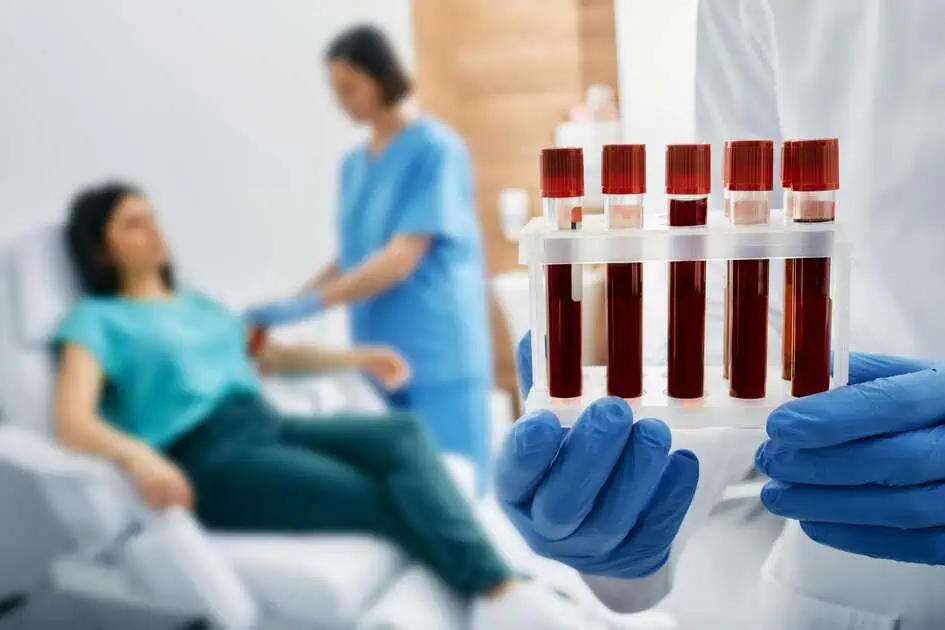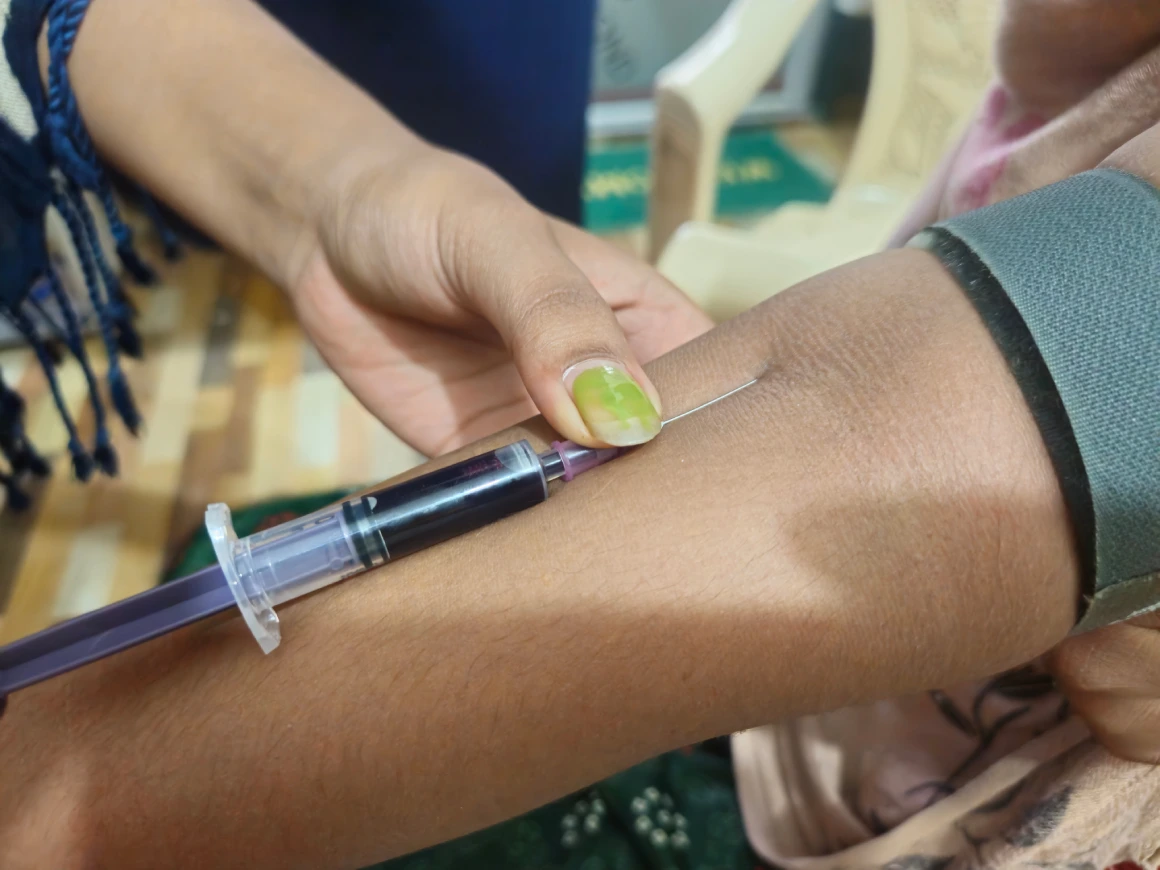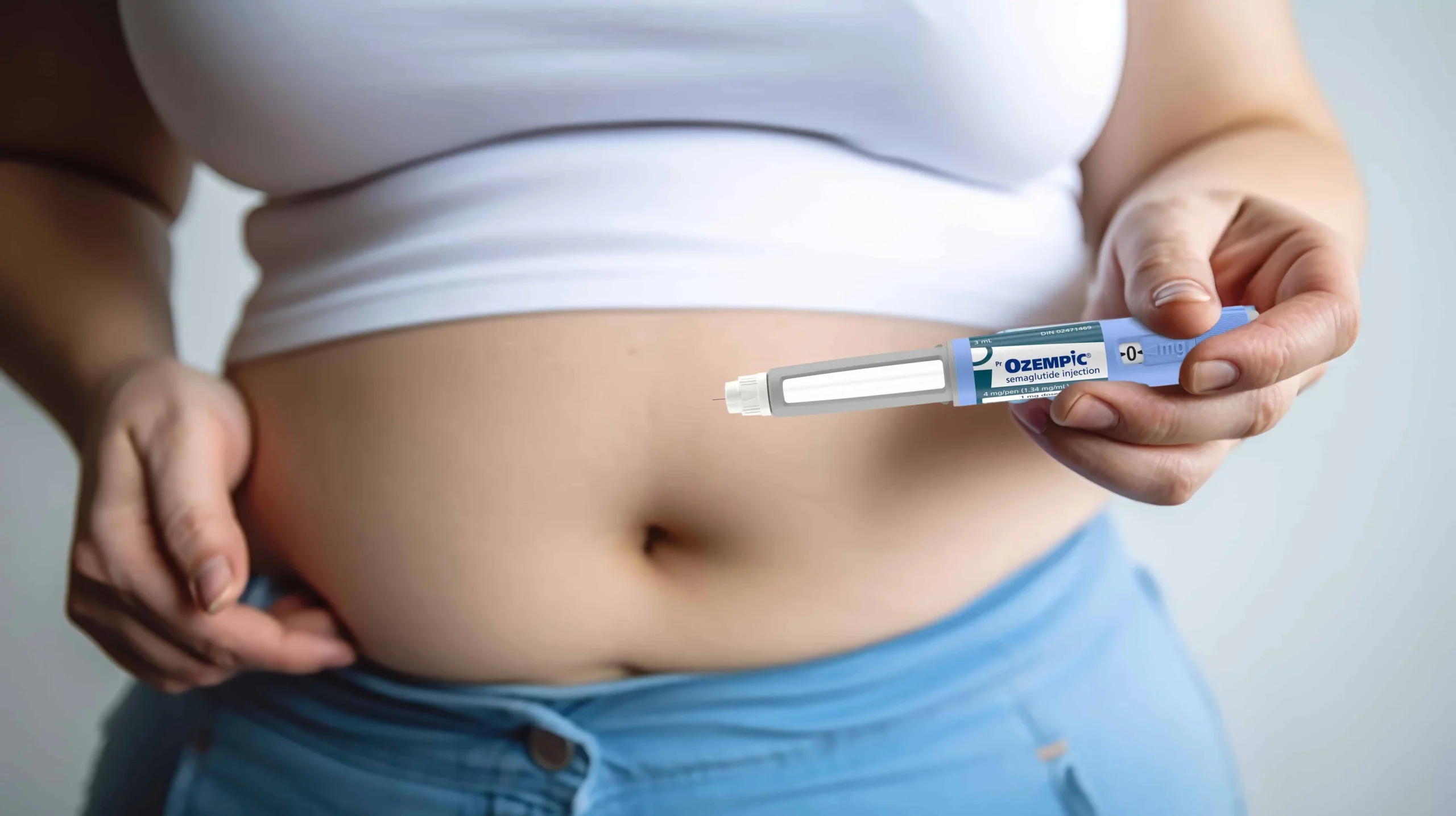
Table of Contents
A blood test offers you a quick and straightforward way to check up on your health, but a little preparation on your part can go a long way in making sure your results are spot on. If you’re doing routine testing, figuring out a diagnosis, or monitoring a treatment plan, following the right steps beforehand helps prevent inaccurate readings or having to redo the test. Here’s what you need to know before your appointment to get the best results.
The Purpose of Your Blood Draw
Blood tests are done for all kinds of reasons—whether it’s part of your routine checkup, tracking a health issue, or checking hormone levels. But not every test works the same way, and some require a little extra prep to make sure the results are as accurate as possible. Here are a few examples:
- Basic Wellness Panel gives you the key aspects of your health, like metabolism, iron levels, blood sugar balance, thyroid function, and vitamin D levels, giving you a better idea of where you stand.
- Complete Wellness Panel takes a deeper dive into heart health, inflammatory responses, and hormone levels to provide a more comprehensive view of your overall well-being.
- Detox and Hormone Panels assess how well your liver is working, how efficiently your body is removing toxins, and whether your reproductive hormones are in balance.
Understanding the specific purpose of your test helps in proper preparation, such as fasting, avoiding supplements, or timing tests at optimal points in the day. Proper health screening ensures these tests provide accurate insights.
Fasting Requirements
Some of our blood tests require fasting to make sure food and drinks don’t mess with your glucose, cholesterol, or metabolism results. If your test needs fasting, here’s what you should know:
- Lipid Panel (cholesterol and triglycerides)
- Comprehensive Metabolic Panel (CMP)
- Glucose and Hemoglobin A1c (for diabetes assessment)
Fasting usually means skipping food and drinks (except water) for about 8–12 hours before your blood test. To make sure your results are accurate:
- Avoid high-fat or sugary meals the evening before.
- Stick to water only; avoid coffee, tea, or flavored drinks, as they may affect readings.
- Schedule morning appointments to minimize fasting discomfort.
Hydration Matters
Drinking enough water before your blood draw helps keep your veins easier to find and reduces the chance of multiple needle sticks. If you’re dehydrated, your veins can shrink, making the process trickier. Staying hydrated improves circulation, making the whole experience quicker and more comfortable.
- Drink 16–24 ounces of water before your appointment.
- You don’t need have to chug water like crazy—too much and you can mess with your electrolyte balance and throw off your test results.
- If you’re fasting, feel free to sip on water every now and then to stay hydrated without affecting your test.
Medications and Supplements
Some medications and supplements can affect your blood test results, so it’s good to know what might cause unexpected changes:
- Biotin (Vitamin B7): Can mess with thyroid and hormone test results, making them look higher than they really are.
- NSAIDs (like ibuprofen and aspirin): Might impact how your blood clots and affect platelet counts.
- Steroids and Hormone Therapy: Can throw off cortisol levels and other hormone-related readings.
- Iron and Magnesium Supplements: Could influence iron panel results and electrolyte balance.
Not sure if you should pause any meds before your test? Check with your healthcare provider. If you need to stay on them, just let the lab tech know so they can take that into account.
Avoiding Alcohol and Caffeine
Alcohol consumption within 24 hours of a blood test may interfere with liver function markers, hydration levels, and triglyceride readings. Caffeine can temporarily raise blood pressure and stress hormone levels, affecting cortisol and adrenal function tests.
- Steer clear of alcohol for at least a day before your test since it can mess with your liver markers and hydration levels.
- Try to cut back on caffeine a bit before your blood tests. Having too much caffeine beforehand can throw off your results and might mean you’ll have to retake the test.
Physical Activity Considerations
Going too hard at the gym right before your blood draw can also affect your results, making them less accurate:
- Creatine Kinase and Lactic Acid: Can spike due to muscle strain and intense exercise.
- Electrolyte Levels: May shift if you’ve been sweating a lot.
- Glucose and Cortisol: Can temporarily rise after a tough workout session.
Take it easy on intense workouts at least a day before your test. If you’re getting a metabolic or hormone panel, we urge you to stick to light or moderate activity, which will help keep your results more consistent.
Managing Anxiety and Stress
It’s completely normal to feel a little nervous about a blood draw—it might even make your heart race a bit, induce some sweating, or even make you feel a bit lightheaded or dizzy in some cases. The good news is there are ways to keep yourself calm and make the experience much easier:
- Practice deep breathing exercises or guided meditation the night before and on the day of the appointment to help regulate stress levels.
- Engage in progressive muscle relaxation techniques to reduce body tension, which can sometimes make a blood draw feel more uncomfortable than it actually is.
- Inform the phlebotomist if you have a history of fainting, lightheadedness, or needle-related anxiety so they can make necessary adjustments, such as having you lie down for the procedure.
- Look away from the needle and focus on a visual or mental distraction, such as counting backward, listening to music, or recalling a pleasant memory.
- Arrive early to allow time to settle in, avoid feeling rushed, and mentally prepare for the procedure.
- Request the smallest gauge needle available if you are particularly sensitive to discomfort, as smaller needles can make the experience feel less invasive.
- If you tend to feel anxious or have had issues with dizziness or fainting in the past, bringing a friend or family member along can help make the experience a little easier.
Communicating your concerns with the technician and preparing relaxation strategies can significantly improve your experience and reduce physiological stress responses.
Proper Timing for Hormone Testing
It’s natural for your hormones to fluctuate during the day and at various points in the menstrual cycle. So we recommend to schedule your test at the best time to get clearer results:
- Cortisol: Highest in the morning; tests should be taken between 7–9 AM.
- Testosterone and Sex Hormones: Best tested in the early morning.
- Thyroid Function Tests: Should be taken at a consistent time of day, especially if monitoring long-term trends.
- Female Hormone Panels: Some hormones should be tested on specific days of the menstrual cycle (e.g., FSH and LH on cycle days 2–4, progesterone on days 19–21).
If unsure about the optimal timing for hormone-related tests, consult with the ordering provider to schedule appropriately.
What to Expect During the Blood Draw Procedure
A blood draw is usually a simple and quick process. When you arrive, the technician or phlebotomist will confirm your identity and go over the tests you have done. You’ll likely sit in a chair with an armrest, but if you tend to feel dizzy or faint, they might have you lie down to keep you comfortable.
A tourniquet will be wrapped around your upper arm to make the veins more prominent. The technician will cleanse the area with an antiseptic wipe before inserting a sterile needle into a vein, typically in the inner elbow. You may feel a slight pinch or sting as the needle is inserted, but discomfort should be minimal. Blood is drawn into one or multiple vials, depending on the number of tests ordered.
After the blood is drawn, the needle is taken out, and the technician will press a cotton ball or gauze on the spot to help prevent bruising. Then, they’ll put a small bandage over it, which you should leave on for at least a few hours. The whole process usually takes less than five minutes. If you start feeling lightheaded, let the technician know right away and take a moment to rest before heading out.
Dressing for a Comfortable Blood Draw
Comfortable attire makes the blood draw process easier for both the patient and the technician.
- Wear a short-sleeved or loose-fitting top to allow easy vein access.
- Skip tight sleeves since they can make it harder to access your veins.
Takeaway
Spending a bit of time preparing for your blood draw can really help make your results more reliable and easier to understand. Plus, it reduces the chance of confusion or needing to retake tests later. If anything about the preparation steps isn’t clear, feel free to ask your health and wellness care provider or the testing facility—they’re happy to help!
Our Blood draw services in Federal Way offer professional and reliable testing, making it easy to take control of your health. Whether you need affordable phlebotomy services, wellness panels, or hormone testing in Federal Way, our team is here to assist you. We also provide specialized testing, including the Cognitive decline panel Federal Way, to help assess long-term cognitive health.
Schedule Your Blood Draw Appointment Today to take charge of your wellness and ensure accurate lab results. Visit us for a Blood Draw in Federal Way, WA, and explore how Performance IV hydration can complement your health journey.



